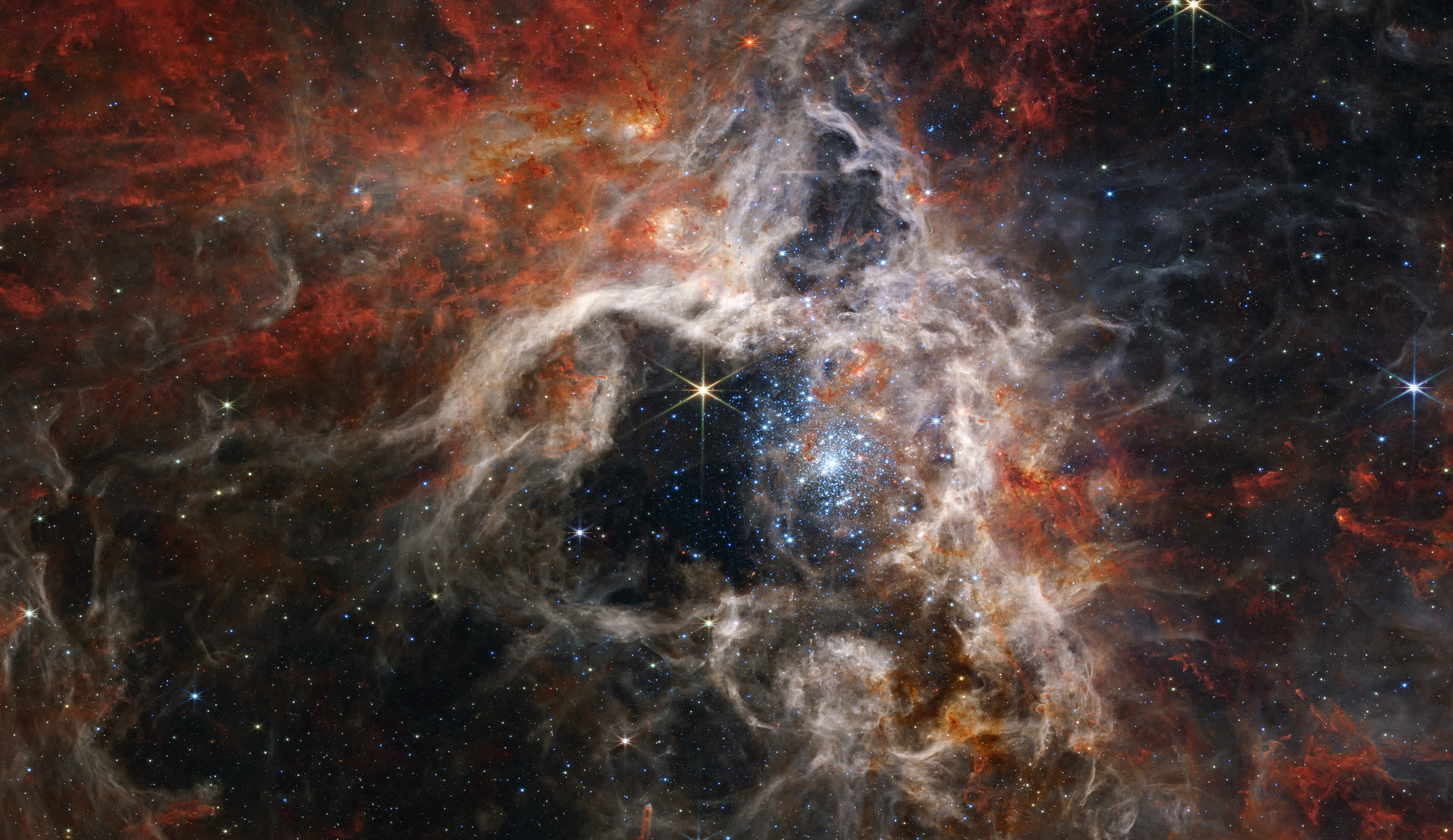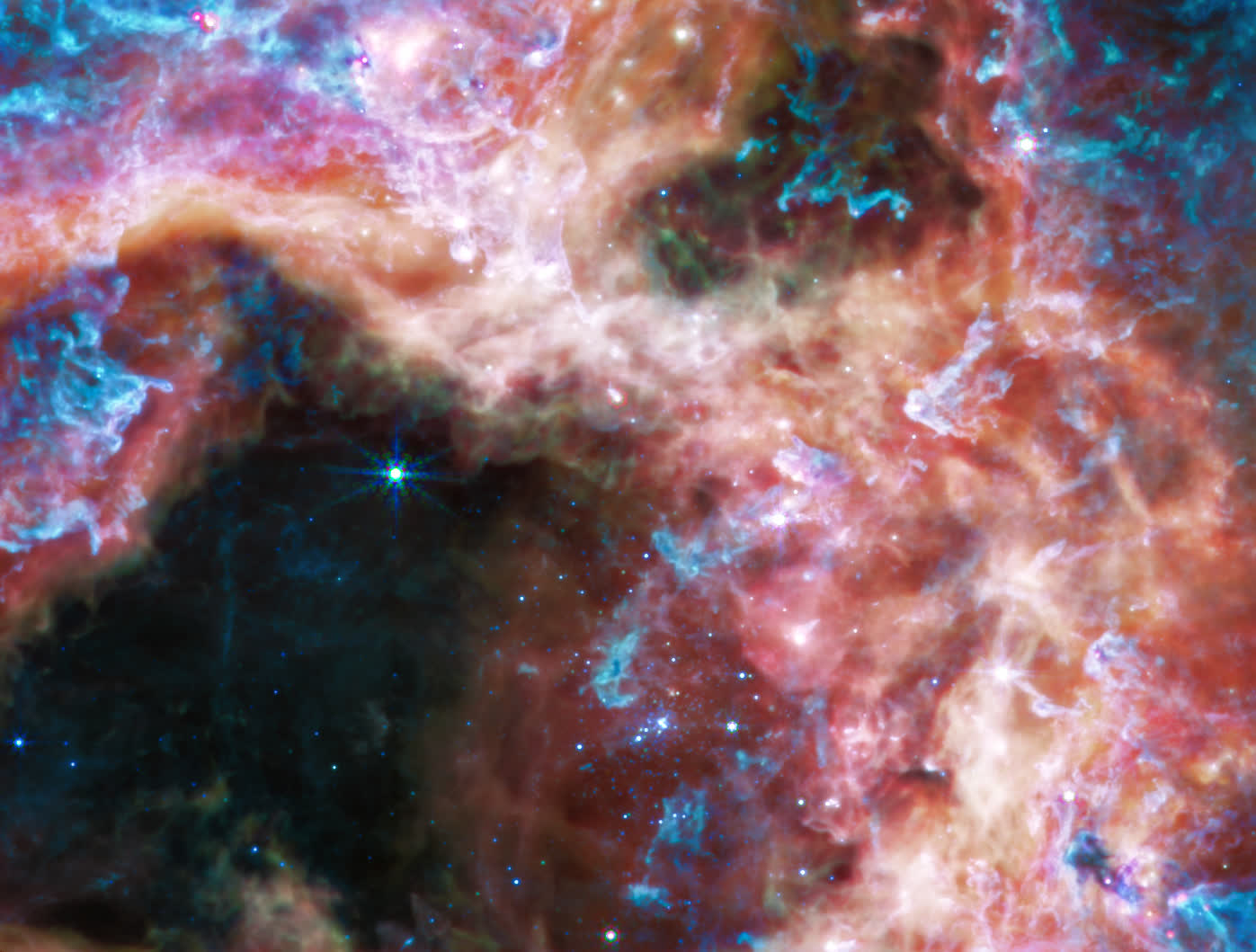The big picture: NASA has shared new imagery captured by the James Webb Space Telescope, this time illustrating a stellar nursery spanning 340 light-years across. The 30 Doradus, more commonly known as the Tarantula Nebula, is located 161,000 light-years from Earth in the Large Magellanic Cloud galaxy. It was first observed by Nicolas-Louis de Lacaille in the 1750s during an expedition to the Cape of Good Hope.
It is the largest and brightest star-form region in the Local Group, a collection of "nearby" galaxies that also includes the Milky Way.
Astronomers pointed three of Webb's cutting-edge instruments at the Tarantula Nebula. Webb's Near-Infrared Camera (NIRCam) highlights tens of thousands of never-before-seen young stars that had been previously hidden by cosmic dust. Massive young stars at the center of the nebula have carved out a hollow region thanks to their blistering radiation. The scattered red stars are those that have yet to emerge from their dusty cocoon.
The image also features Webb's diffraction spike pattern, an artifact of the telescope's structure.
Switching to Webb's Mid-Infrared Instrument (MIRI) provides a different look thanks to its longer wavelengths. Here, the cooler gas and dust really shine, and hydrocarbons light up the clouds in purple and blue. The mid-infrared light with its longer wavelengths is able to penetrate the dust clouds, revealing an environment that has been previously unseen.
The Tarantula Nebula is an especially interesting target for astronomers as it has a similar type of chemical composition to the star-forming regions observed at the universe's "cosmic noon," a period of peak star formation when the universe was just a few billion years old. Here in the Milky Way, star formation is not as fierce and the chemical composition is different, so we turn to the Tarantula as a nearby example.
NASA has published full-resolution examples of the Tarantula Nebula on its website for print or display. At 140MB more than 14,500 pixels wide, there is plenty to keep astronomy aficionados and casual observers alike engaged for hours.

